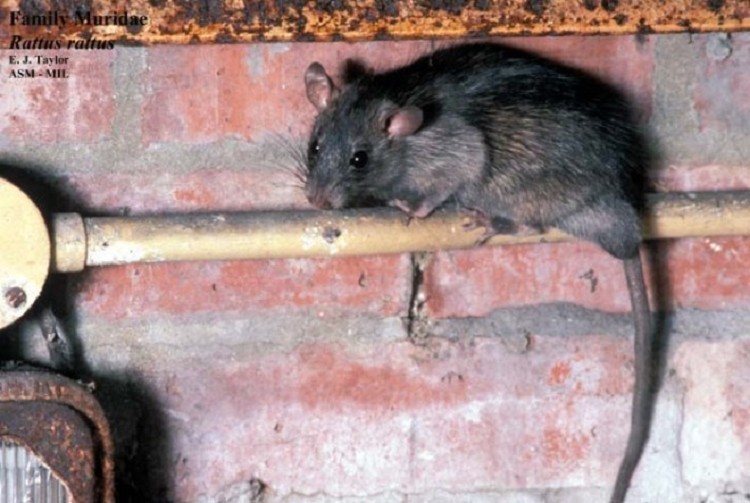Roof Rat, -Rattus rattus
The Roof Rat, which is very similar to the Brown Rat, occurs all across the state. It is also known as the Black Rat, House Rat, or Ship Rat.
Description: A slender, medium-sized rodent with large ears and a long, scaly, sparsely-haired tail (longer than total body length). The upper fur color is grayish-black with an almost pure black streak down the middle of the back. The belly is grayish to whitish, occasionally pale yellow.
Length: 12.9 - 18.3 inches
Tail: 6.5 - 10.0 inches
Ears: 0.5 - 1.1 inches
Weight: 5.0 - 10.0 ounces
Similar Species:
•Brown Rat has a more brownish color, a more robust build, smaller ears, and shorter tail (less than total body length).
Habitat: It is almost always found among human dwellings, usually in upper stories of buildings. They can also be found in trees or on ships; it occurs less frequently on the ground or in open fields.
Diet: Omnivorous, but prefers grains and cereals. They will also eat insects, fruits, and other vegetation.
Breeding information: Breeding may occur all year, but summer and fall are the peak times. Females build nests out of sticks and leaves, usually in upper floors of buildings or trees. The gestation period lasts from 21-29 days resulting in 6-12 (average 8) offspring. Females can have up to 5 litters in a year. The young open their eyes after 15 days and are weaned by the 3rd or 4th week. Young rats can breed in 3-5 months.
Status in Tennessee: The Roof Rat may be abundant in some areas. This rat also produces a considerable amount of damage to property and foods, and carries a large number of communicable diseases.
Fun Facts:
•The Roof Rat, which is an Old World species, is believed to have arrived in North America in 1609 when the colonists settled in Jamestown.
•They are excellent climbers using their long tail for balance as they climb building heights.
Best places to see in Tennessee: Upper stories of buildings near grain elevators or near large shipping docks.
